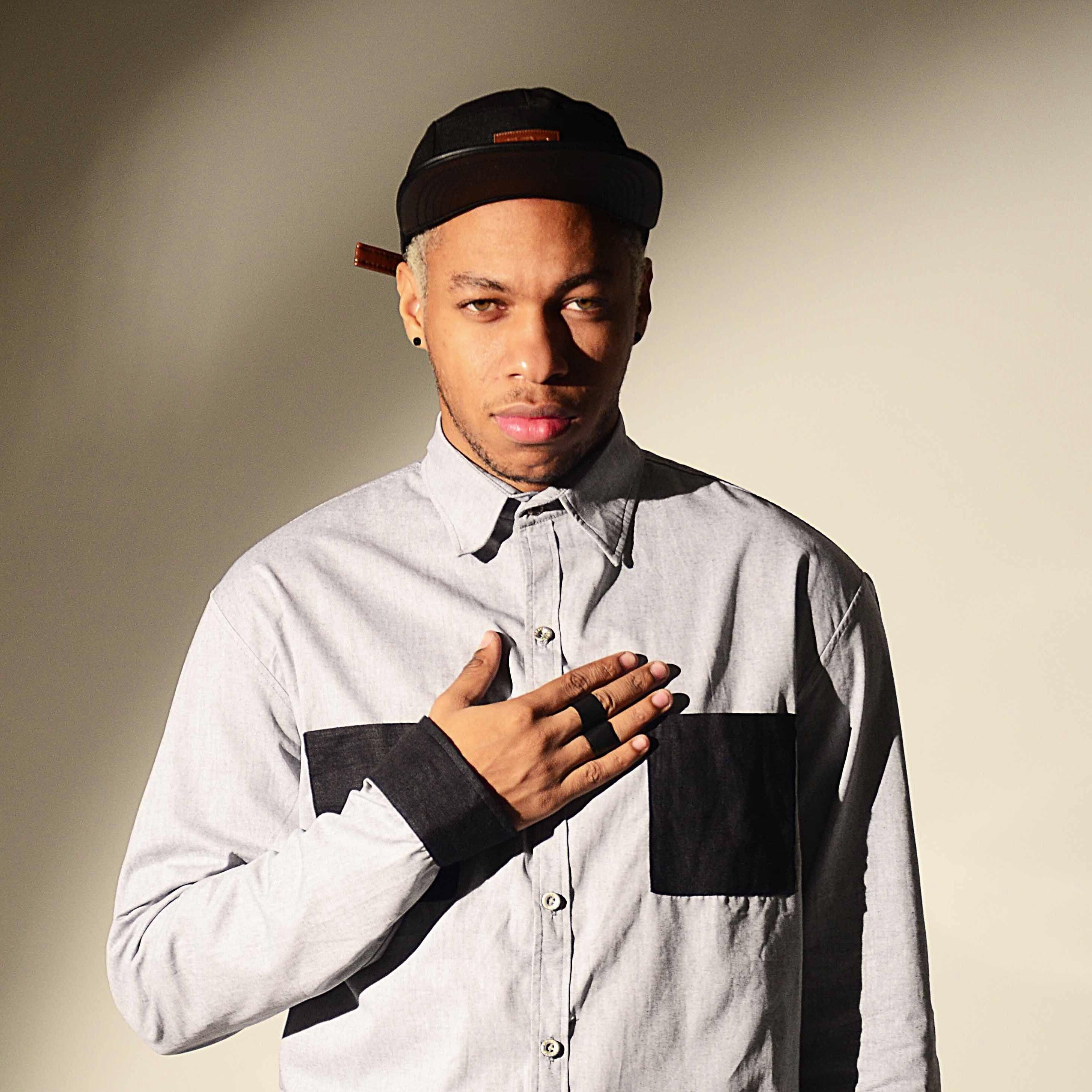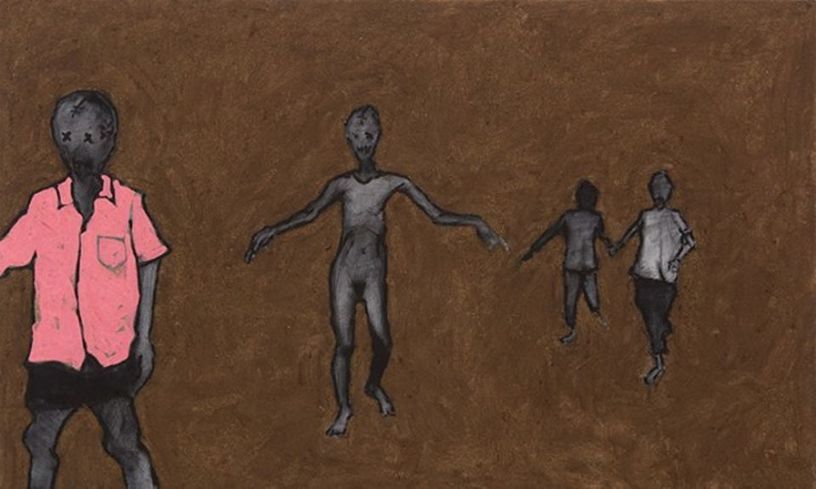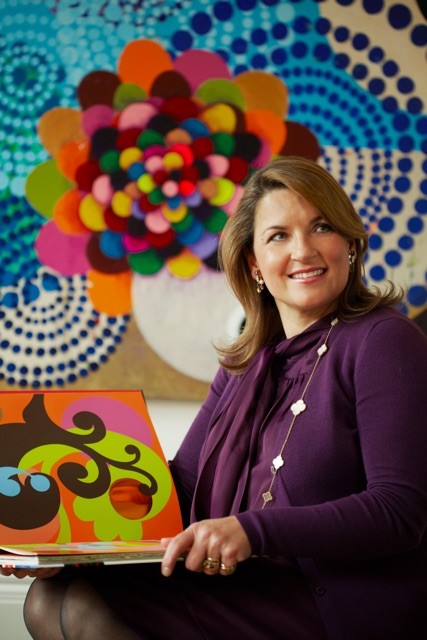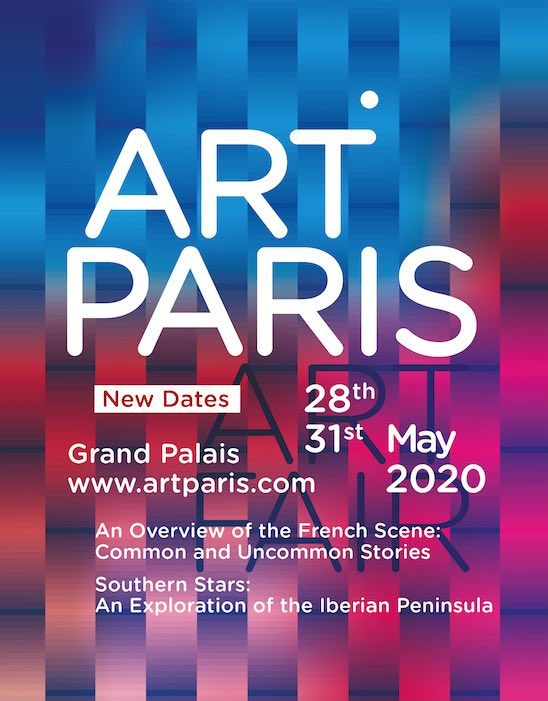Maxwell Alexandre, a powerful look at the negritude of Brazilian Afro-descendants exhibited at the Musée d’Art Contemporain de Lyon
08/03/2019 - 07/07/2019Maxwell Alexandre draws inspiration from his life in the Rocinha favela in Rio de Janeiro to create a complex and committed narrative work in a tense Brazil. He builds a unique universe from works that are both delicate and powerful.
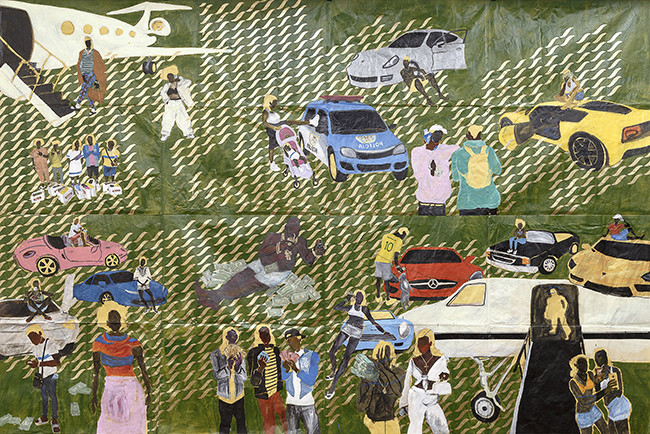
Inspired by mural painting, rap music and his practice of roller skating, which deeply influenced his perception of urban space, Maxwell Alexandre captures the city’s energy. His work represent the collective and raise many social, cultural and political issues. On various supports such as brown paper, iron doors and window frames, situations of daily life emerge in which groups of anonymous individuals with barely sketched faces (women, children in uniform, urban service workers, police officers…) circulate in the streets and alleys of Rocinha, the largest favela in Rio de Janeiro, where he lives and works. By creating monumental and popular frescoes, the artist, through his fluid and precise painting, celebrates the Afro-Brazilian body in an assumed position of power.
Works in brown paper : PARDO É PAPEL
In 2019, the Musée d’art contemporain de Lyon will present Maxwell Alexandre, the young Brazilian artist, with his first monographic exhibition outside Brazil. On this occasion, the museum welcomes the artist for a one-month residency in Lyon, during which he creates new paintings. The title of the exhibition Pardo é Papel refers in Portuguese, through the use of the word Pardo, to the hues of brown skins that were widely associated with slavery and colonialism. Pardo is amplified here by the kraft paper “Papel” that Maxwell Alexandre deliberately uses to embody the affirmation of Afro-descendant communities.
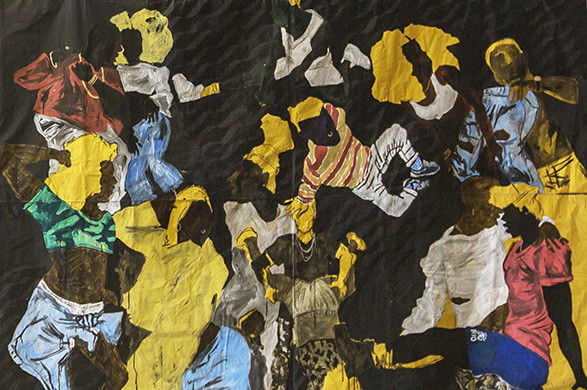
Latex, cirage à chaussures, défrisant, bitume, teinture, acrylique, vinyle, graphite, stylo à bille, charbon et pastel à l’huile sur papier kraft
320 x 476 cm
Collection particulière, Majorque
Courtesy Fortes D’Aloia & Gabriel et A Gentil Carioca
Abstract art as a transition : from professional roller-skater to a contemporary artist on the rise
Maxwell Alexandre, while studying art in Rio de Janeiro (Brazil) and his military service, practiced rollerblading at a professional level from 14 to 24 years old. Interested in art, he tries to combine the two disciplines: “I started with abstract painting because it was a good transition between rollerblading and art.” I would put paint on the ground, roll in it with my rollerblades.” Then he regularly shifted the canvas, creating abstract lines without controlling the drawing or painting. It was a question of imitating the movements of the rollerblade in the form of painting. “The question was how I could put the same feeling in my painting.
Instead of a “white cube”, Maxwell Alexandre chose to present his first solo show in his former studio in a Rocinha sports complex. “My first workshop was in the complex[…]. It started two years ago, it was my first studio experience. It was my most intense period as an artist. »
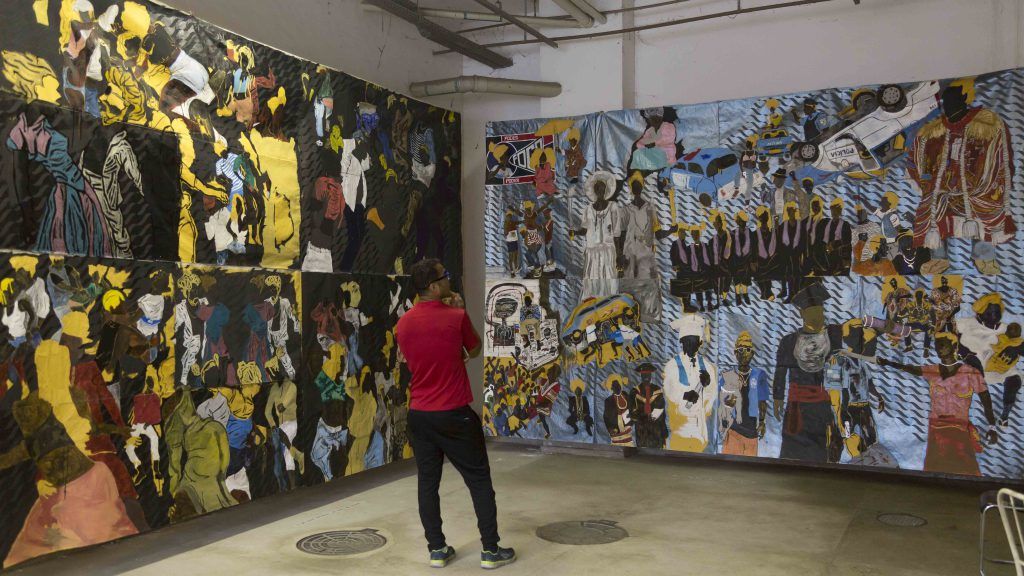
The choice of space is unusual. Among the rings, skaters and the persistent smell of sewage waters, Maxwell Alexandre exhibits eleven large paintings, all 4.75 by 3.60 metres in size. It is not only their format that makes a difference, but also their content: scenes from everyday life in Rocinha.
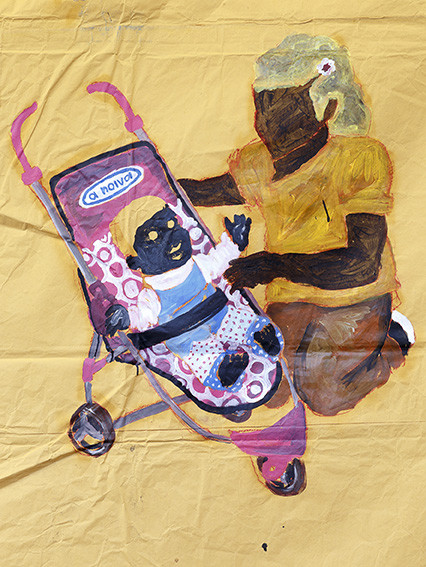
Latex, cirage à chaussures, défrisant, bitume, teinture, acrylique, vinyle, graphite, stylo à bille, charbon et pastel à l’huile sur papier kraft
Dimensions variables
Courtesy Fortes D’Aloia & Gabriel et A Gentil Carioca
Striking racism in the face
Maxwell Alexandre deploys an urban poetry based on the construction of stories and scenes from his daily experiences in the city and in Rocinha. These are large-format paintings in which Afro-Brazilian bodies are presented on their own, but also in confrontations with the police, illustrating a contemporary community routine.
“This series is important because it is a truly contemporary issue, the emancipation of blacks.” “I think sometimes you have to hit racism in the face, but I don’t have the courage to physically hit someone, so I do it in painting. »
…
“I prefer painting, because painting is not immediate. “Maxwell Alexandre
Maxwell Alexandre highlights the minorities, the difficulties and violence of life in the favela, as well as the issue of Afro-Brazilians.
« A political and conceptual act that I was articulating in doing this : painting black bodies on brown paper. Since the color brown was used for a long time to obscure negritude.»
He is part of a small group that has created his own church, but a church of an unusual kind. Maxwell Alexander says it very simply: “It is an art church. That’s just it. “Also called the church of the kingdom of art, or sometimes A Noiva (the wife), it is a kind of symbolic offering to the divinity of art.
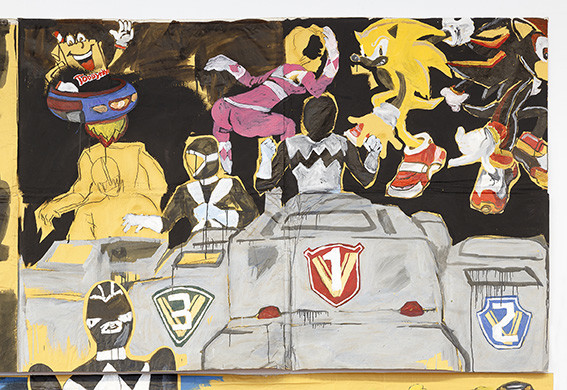
Latex, cirage à chaussures, défrisant, bitume, teinture, acrylique, vinyle, graphite, stylo à bille, charbon et pastel à l’huile sur papier kraft
Dimensions variables
Courtesy Fortes D’Aloia & Gabriel et A Gentil Carioca
Art to sustain the community
Every two months, A Noiva’s artists and designers organize a public exhibition to present their work. They call the exhibition series Dízimo (tenth), because 10% of the donations are reinvested in the church. Each exhibition takes place in a space chosen by the artist and presents works of his choice. The Pardo é Papel exhibition is Maxwell Alexandre’s second Dízimo, which lasts only one day. “I think a noiva is important because it allows us to imagine things that would be impossible in the institutional system. For example, in a noiva, we create a space in which you can present unfinished works,” explains Maxwell Alexandre.
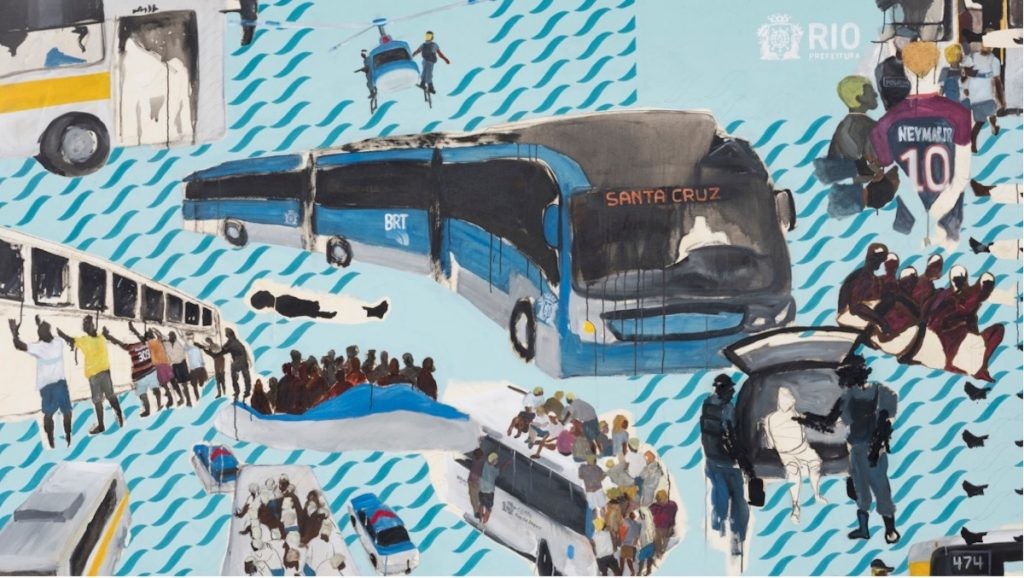
Raoni Azevedo, co-founder of A Noiva, echoes Maxwell Alexandre: “As most artistic gatherings are organized by well-established artistic institutions, A Noiva tries to create an alternative, more accessible scene where everyone can present their work and where everyone is welcome. »
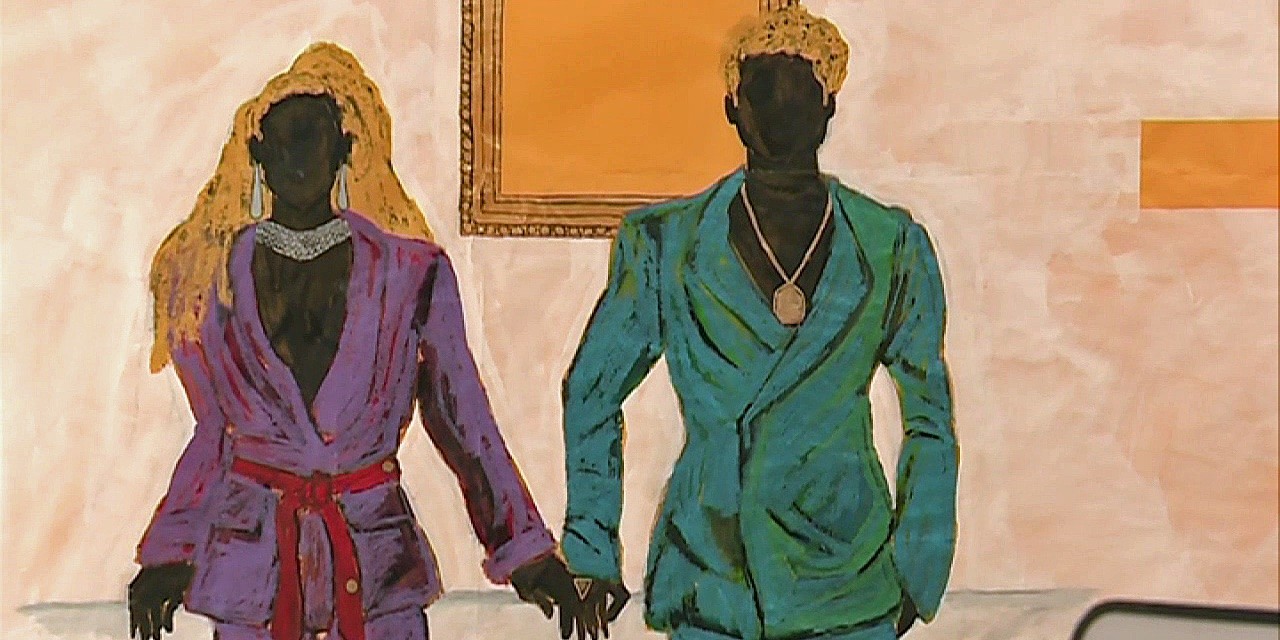
Biography of the artist
Born in Rio de Janeiro (Brazil) in 1990, where he lives and works, Maxwell Alexandre is a graduate in graphic design from the PUC-RJ (Pontifical Catholic University of Rio de Janeiro) in 2016. In August 2017, Alexandre was part of the group exhibition Carpintaria para todos at the Fortes D’Aloia & Gabriel gallery. He organized the exhibition Laje só in Escola Surfe – Complexe Esportivo de Rocinha. His works are part of the collection of the Pinacoteca de São Paulo and the MASP.
In 2018, the young artist was noticed in Brazil and on the international scene:
- In September at the Berlin Art Fair in the group exhibition Recortes da Arte Brasileira. – At the gallery A Gentil Carioca (Rio de Janeiro) for his first solo exhibition in gallery O Batismo by Maxwell Alexandre (The Baptism of Maxwell Alexandre), 21 July – 12 September 2018) and in the collective exhibition Abre Alas 14.
- And at the MASP (São Paulo Art Museum) for the collective exhibition Histórias Afro- Atlânticas (June 29 – October 21, 2018) dedicated as one of the best international exhibitions in 2018 by the New York Times.
- In December 2018, one of his works was presented on the stand of the gallery A Gentil Carioca at Art Basel Miami.

